Asakusa Events
January
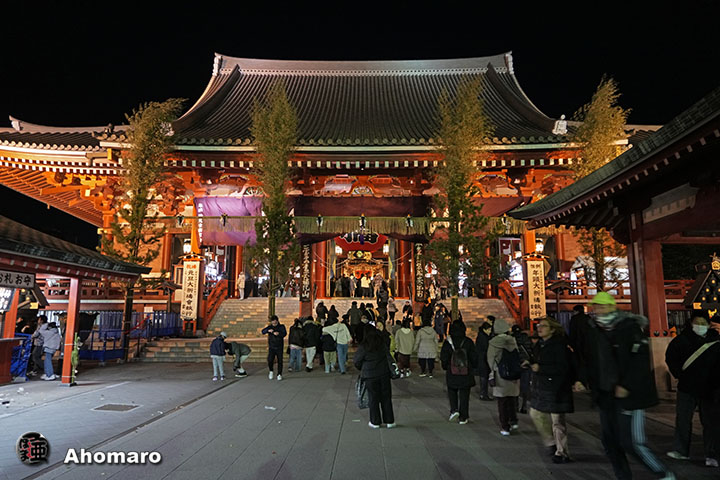
Hatsumode at Sensoji Temple and Asakusa Shrine
February
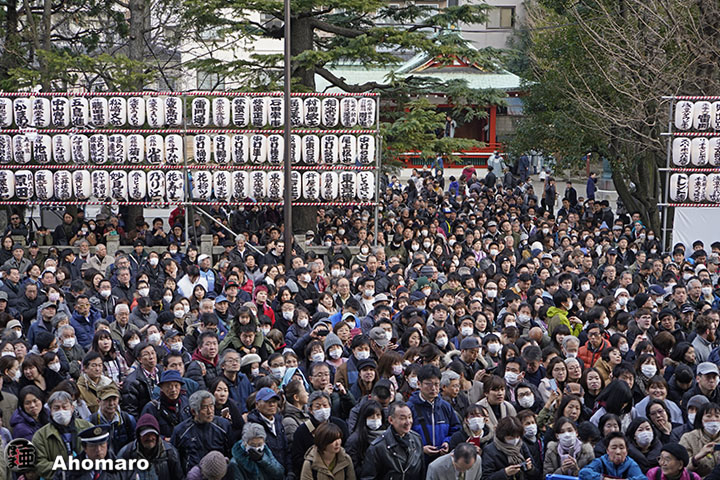
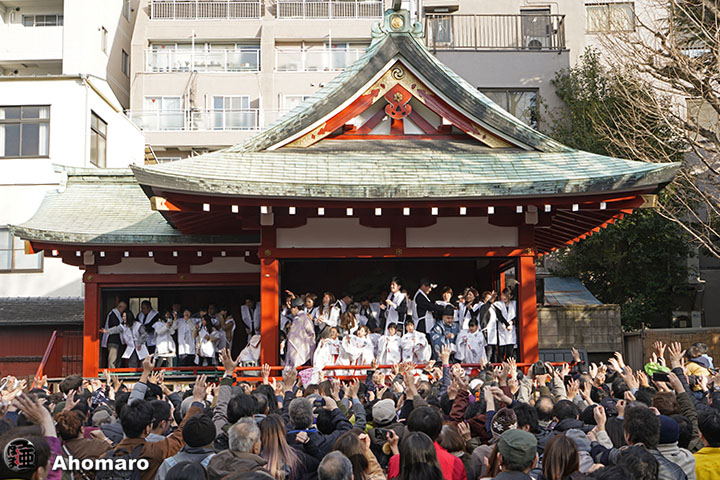
Setsubun Festival
Setsubun originally refers to the division of the four seasons: Risshun, Risshatsu, Risshu (the first day of summer), Risshu (the first day of autumn), and Risshu (the first day of winter). Since Risshun is close to New Year’s Day of the lunar calendar, the day before Risshun became established as Setsubun since the Edo period (1603-1867) as a special day to celebrate the New Year and to drive away evil spirits. Although it varies from region to region, it is said that if you eat one more bean than your age on the day of Setsubun, you will live a year of good health and good fortune.
Senso-ji Temple was the first to hold this Setsubun event on a large scale in Edo. Today, the main event of the Setsubun celebration is a bean-throwing ceremony performed by Toshio, or “New Year’s Men”. On the day of the event, the chief priests of each temple and selected New Year’s men parade from Denboin to the main hall, and the New Year’s men scatter beans from a stage set up on the east side of the main hall. The traditional bean-throwing ceremony at Senso-ji Temple does not say “Oni wa soto” (demons do not exist in front of the Goddess of Kannon), but rather “Senju banzai, fuku wa uchi” (good luck, good fortune, within).
March
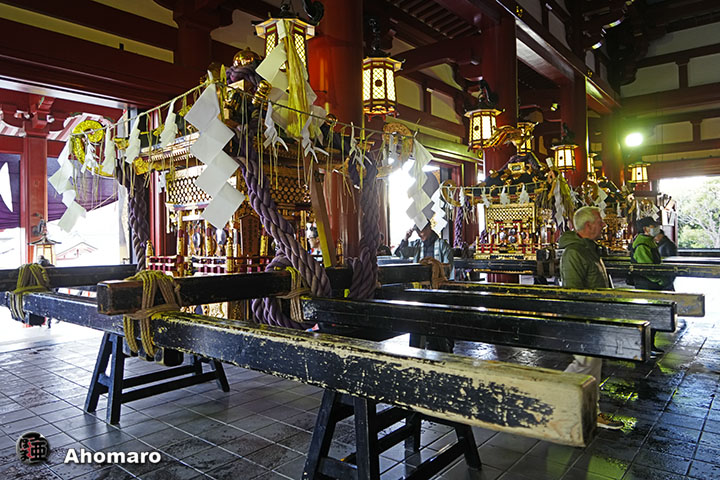
Sensoji Temple Honzon Jigenkai
On March 18, 628 (36th year of Emperor Suiko), fishermen brothers Hinomae Hamanari and Takenari scooped up a statue. When Doji Nakachi, the chief of the land, learned that the statue was the Kannon (Goddess of Mercy), he converted his house into a temple and enshrined the Goddess of Mercy. This was the origin of Senso-ji Temple. The three people involved in the realization of the Kannon were revered as deities and are still enshrined at the Asakusa Shrine under the name “Sanja-sama.
The Honzon-jigenkai, held on March 18, is a puja to celebrate the manifestation of the principal image. On the morning of the 18th, the portable shrine will be taken down from the main hall, followed by the performance of the Jigenkai Ceremony by all the priests of the temple.
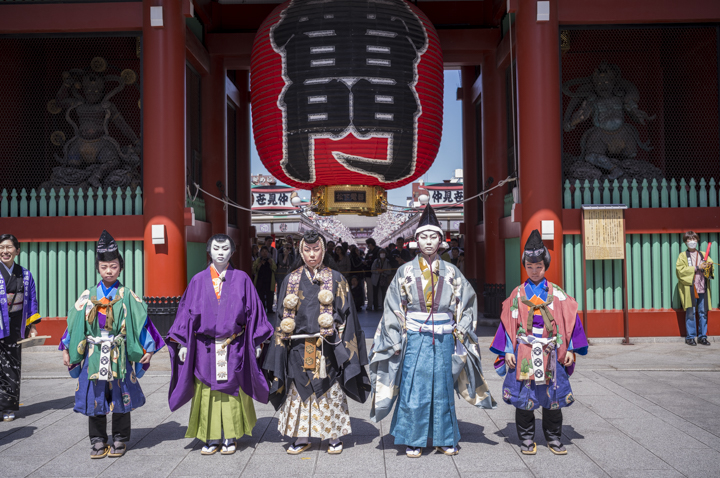
Asakusa Children’s Kabuki Festival
Sponsored by the Okuyama Omairimachi Shopping Street Promotion Association, located on the west side of Sensoji Temple, the festival is held in March at the Asakusa Shrine’s Kaguraden. Children’s Kabuki plays from around the Kanto region are performed for several days, mainly on weekends.
April
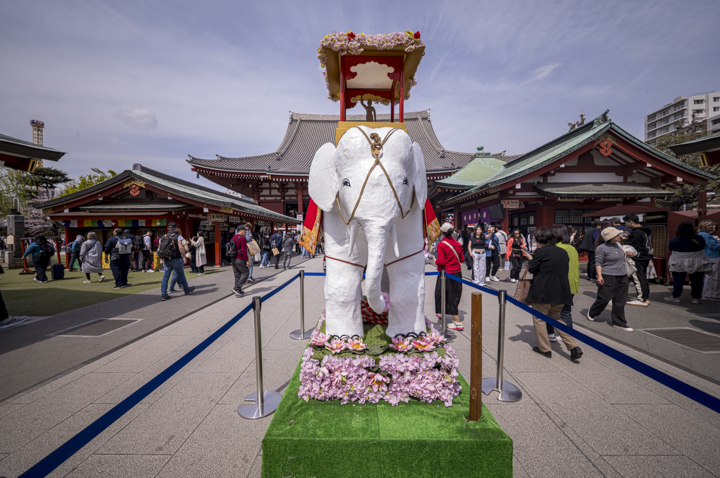
Flower Festival (Sensoji Temple)
April 8 is the day on which Shakyamuni, the founder of Buddhism, was born, and is celebrated as such. The “Buddha’s Birthday” is generally known as the “Hana Matsuri” (Flower Festival).
On this day, “Hana-godo” will be placed inside the main hall, in front of the main hall, and in front of the five-story pagoda. The Hana-godo enshrines a small Buddha statue of the birth of Shakyamuni with his right hand pointing to the heavens and his left hand pointing to the earth. Worshippers pour sweet tea over this Buddha image to express their gratitude for the legacy of Buddha Shakyamuni. The reason for pouring sweet tea on the Buddha comes from the legend that when the Buddha was born, nine dragons descended from the sky and sprinkled sweet dew on him. In the inner sanctuary of the main hall, the “Nativity of Buddha” is hung and a Buddhist memorial service is held, attracting many worshippers throughout the day.
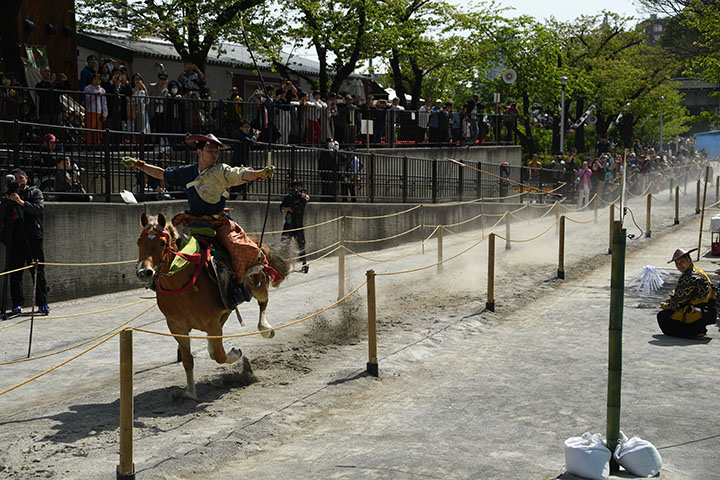
Asakusa horseback archery
Asakusa Yabusame (horseback archery on horseback) was a New Year’s event of Asakusa Shrine in the Edo period, and was revived by Taito City in 1983 as a sightseeing event. Archers dressed in the hunting costume of Kamakura warriors shoot the first, second, and third targets one after another from a galloping horse.
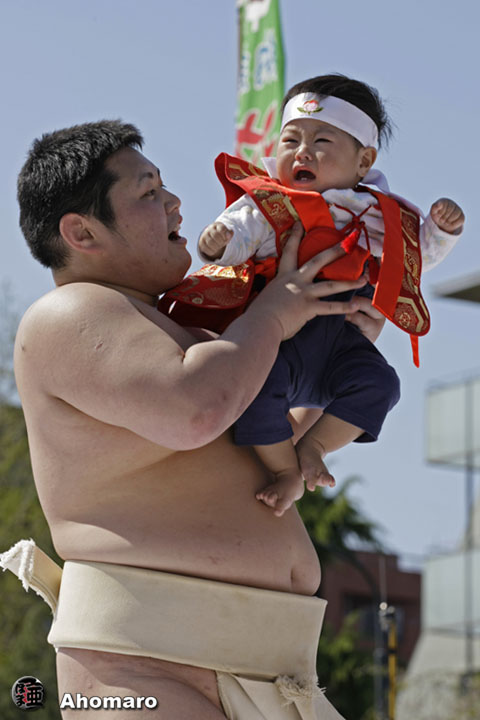
Crying Baby Sumo Contest
Babies in mawashi (traditional ceremonial armour) and held by a pair of performers compete in a crying contest on the ring. The event was started to commemorate the fifth anniversary of the restoration of the statue of Danjuro Ichikawa IX, who was a famous actor of the Edo period, in the hope that he would grow up to be a healthy and strong child.
May
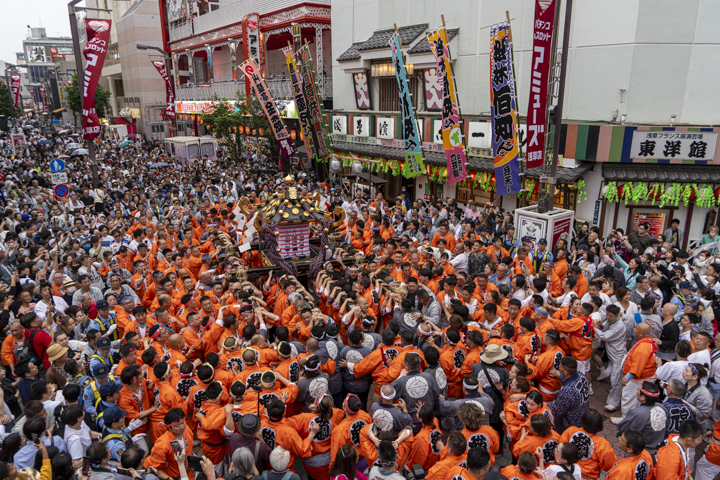
Asakusa Shrine Festival (Sanja Festival)
The festival is held on Fridays, Saturdays, and Sundays, starting on the third Saturday of May, mainly in the 44 towns that are the Ujiko of Asakusa Shrine. It is one of the representative festivals in Japan, attracting approximately 1,800,000 people over the three days, mainly for the parade of portable shrines that is both heroic and spectacular, while retaining the Edo atmosphere. It is said to be the most lively festival of the year in Asakusa, a downtown area that still retains the atmosphere of Edo (old Tokyo), and is one of the most representative events of early summer in Tokyo.
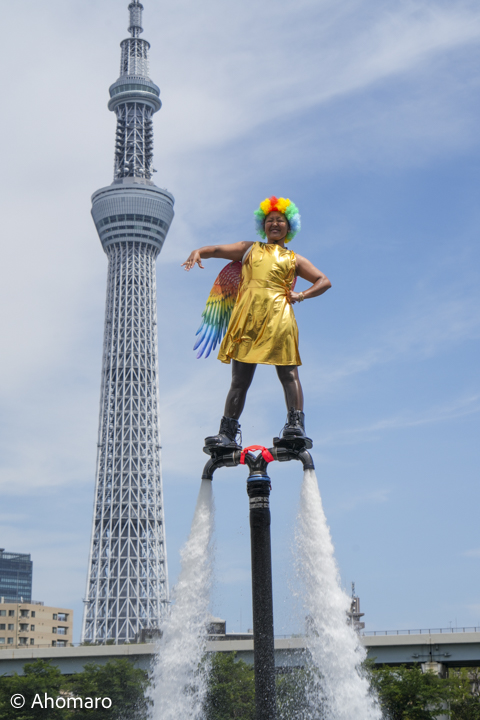
Sumida River Water Surface Festival
The purpose of this event is to provide the enjoyment of marine sports and to revitalize the local community by enhancing knowledge of rules, manners, and safety on the water through hands-on marine sports events and marine sports demonstrations for people in the surrounding area.
Fuji-san’s Planting Market
In the old days, the festival was held on the last day of May (Misoka) and the first day of June (Tsukiuchi). Since the Meiji era (1868-1912), when Mt. Since the Meiji era (1868-1912), when the opening of Mt. Since the Meiji era (1868-1912), a tree-planting market has been held mainly at the site of the Rokugo family’s residence, and it gradually became popular because it was said that the best time to transplant trees was just at the beginning of the rainy season, and that trees bought at the planting market by Fuji-sama would grow well. Today, on the last Saturday and Sunday of May and June, the tree-planting shops line up along Yanagi-dori Avenue, creating an extraordinary jungle.
July
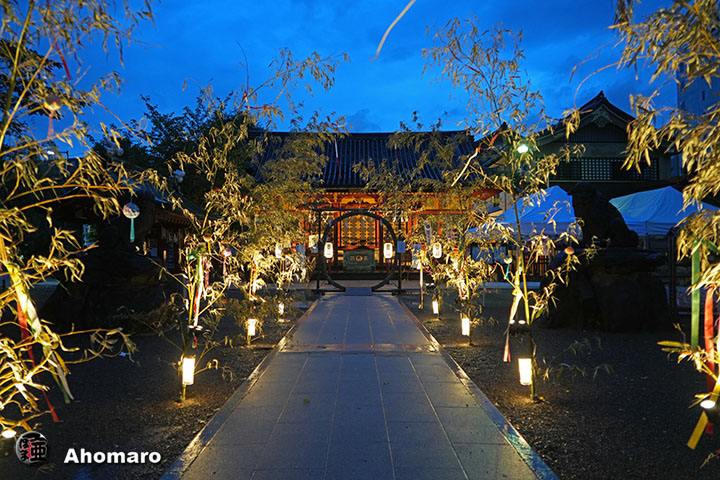
Summer Shrine Visit at Asakusa Shrine
On New Year’s Eve, people in Japan purify themselves of sins and impurities of the past year in a “New Year’s Eve Purification Ceremony,” and on New Year’s Day, which is celebrated with the bell ringing, people pay homage to shrines and temples to pray for safety and peace at the beginning of a new year. About half a year after the beginning of the New Year, the season of “summer” begins in earnest.
At this time of year, when we welcome the ancestral memorial service, we also go through the “Natsukoshi-no-Oharai” to purify ourselves of the sins and impurities of the past six months, and we visit shrines and temples after July 1 as a mid-year milestone to thank for the safety of the past six months and pray for more peace in the coming six months. This new custom is called “Summer Pilgrimage,” and we would like to nurture it as a new Japanese custom that should be preserved and handed down together.
As a new Japanese custom, the “Sanja-sama” of Asakusa Shrine has been advocating it since 2014, and it has spread to shrines and temples all over the country.
On June 30, people purge their sins and impurities from their bodies and souls at the “Natsukoshi-no-Oharae” (summer purification) ceremony, and transfer them to a portable shrine to be washed away. The following day is the “Mt. Fuji, and many people visit Asakusa Fuji Sengen Shrine, located behind Asakusa Kannon. July 7 is Tanabata, the Star Festival, and” Idoarashi,“when wells all over the city are purified and somen noodles are served. Asakusa Shrine holds each of these events as important Shinto rituals throughout the” Summer Pilgrimage.
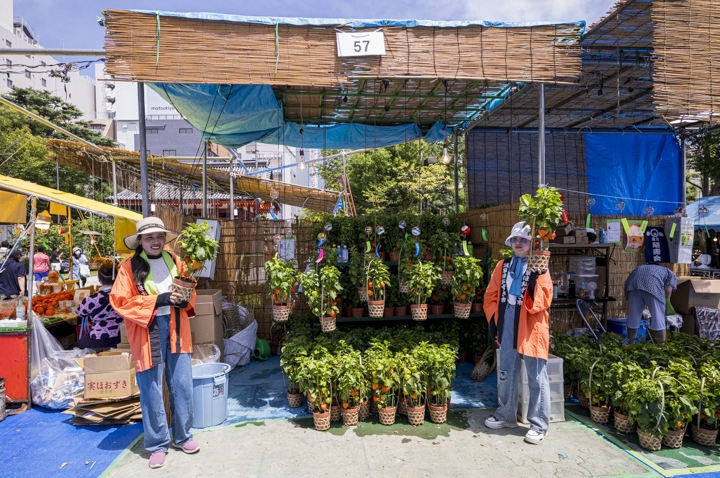
46,000 days (Hozuki City)
The hozuki stalls that decorate the Senso-ji temple grounds are a summer tradition in Asakusa. Both days of the festival are the 46,000th day of the festival, and a hozuki market is held in conjunction with the fair.
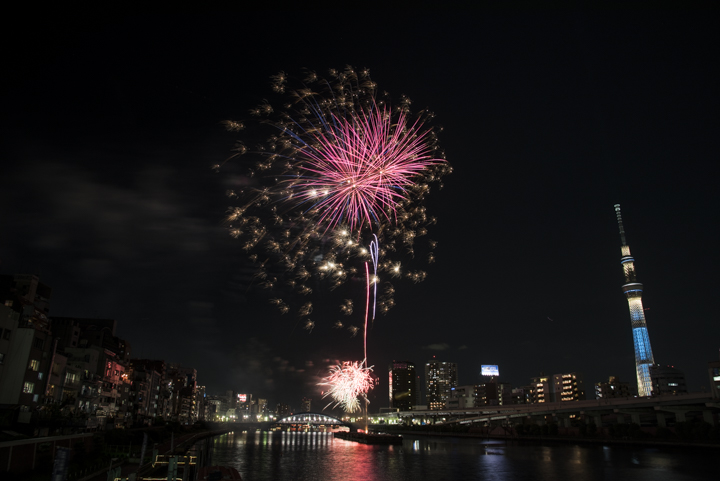
Sumida River Firework Festival (Tokyo)
The name “Sumida River Fireworks Festival,” which has been handed down to this day, is a surprisingly new name, dating from 1978. Prior to that, it was called “Ryogoku no Kawabiraki” (Ryogoku River Festival), and until 1961, the fireworks display was held upstream from Ryogoku Bridge. However, due to worsening traffic conditions, the event could no longer be held after the following year.
Later, in 1978, it was renamed the “Sumida River Fireworks Festival” and revived on the Sumida River surrounded by buildings. The launching site was also moved further upstream, and two launching sites were added so that more people could watch the fireworks.
August
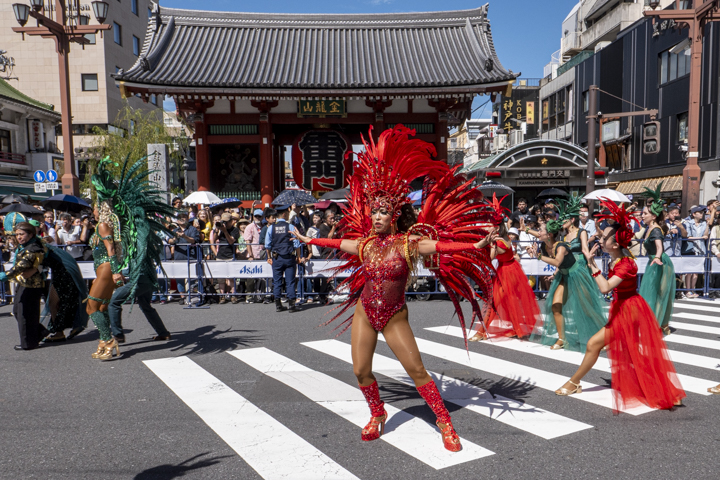
Asakusa Samba Carnival
The Asakusa Samba Carnival, which attracts approximately 500,000 participants every year, has become a summer tradition in Asakusa and has grown to be called the largest in the northern hemisphere. 2025 will mark the 40th anniversary of the event after overcoming the Corona disaster. The Asakusa Samba Carnival has always aimed to be the home of the Brazilian Samba Carnival. As Brazil and Japan are celebrating the 130th anniversary of the establishment of diplomatic relations, we are planning a variety of events.
October
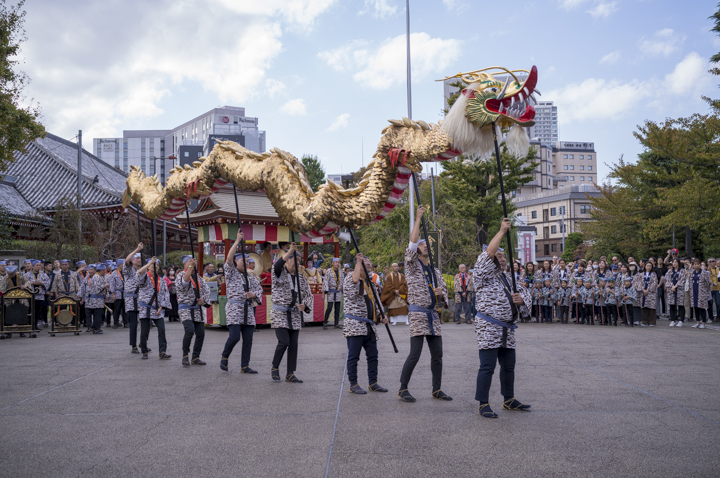
Gold Dragon Dance Festival
The name “Kinryu” is derived from the mountain name “Kinryuzan” of Sensoji Temple. The “lotus pearl” symbolizing the Kannon (Goddess of Mercy) leads the parade of “Kinryu,” the guardian dragon of the Kannon, through the Nakamise and the grounds of the temple. The parade is led by “Rengeju,” the symbol of Kannon, and is followed by a parade of “Kinryu,” the guardian dragon of Kannon, through the Nakamise and the temple grounds.
November
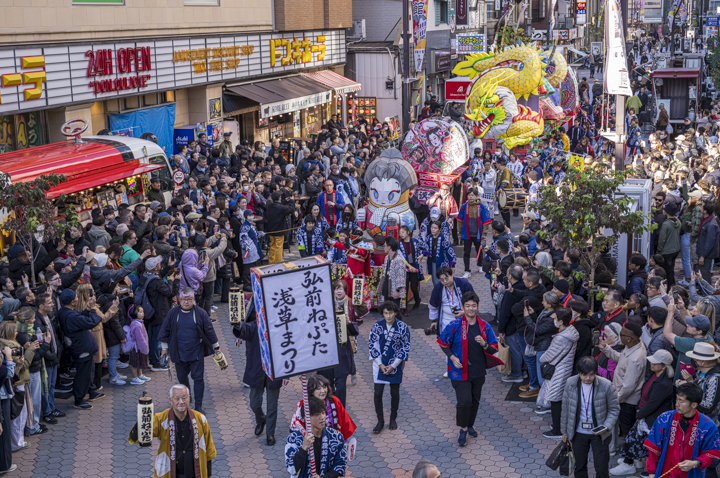
Hirosaki Neputa Asakusa Festival
The Hirosaki Neputa Asakusa Festival, held in Asakusa, Taito-ku, Tokyo, is a three-day tourism promotion event for Hirosaki City, Aomori Prefecture, held in mid-late November. During the three days of the festival, a Hirosaki sightseeing product market will be held, including a direct sale of apples, and on Saturday and Sunday, the Hirosaki Neputa musical performance will be held. Through the Hirosaki Neputa Asakusa Matsuri, we will show you the charm of Hirosaki Neputa!

White Heron Dance
The temple dance was started in 1968 as an event to commemorate the 100th anniversary of the Meiji Era (100th anniversary of Tokyo), and is a revival of the “White Egret Dance” depicted in the “Sensoji Engi” (Kanbun Engi). The origin of the heron dance ritual is believed to be Yasaka Shrine in Kyoto, and the Sensoji temple dance is performed by the Teramai Preservation Society based on the heron dance. Dancers dressed in egret costumes dance, and warriors, stick dancers, bait throwers, musicians, and guardian children parade around the temple while playing “Shirasagi-no Uta” (White Egret Chorus).
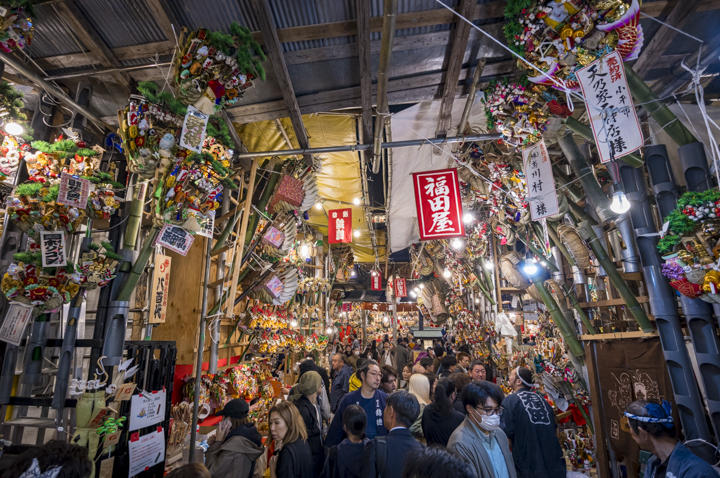
Tori-no-Ichi Festival (Rooster Day Festival)
Tori-no-ichi is a typical annual event that has been held since the Edo period (1603-1868). The festival is held on the day of the rooster in November (in the twelve Chinese zodiac signs) at Tori-no-ji Temple (Washuzanji Chokokuji Temple) in Asakusa and at Wash Shrine and Otori Shrine in various locations to wish for good luck and prosperous business.
December
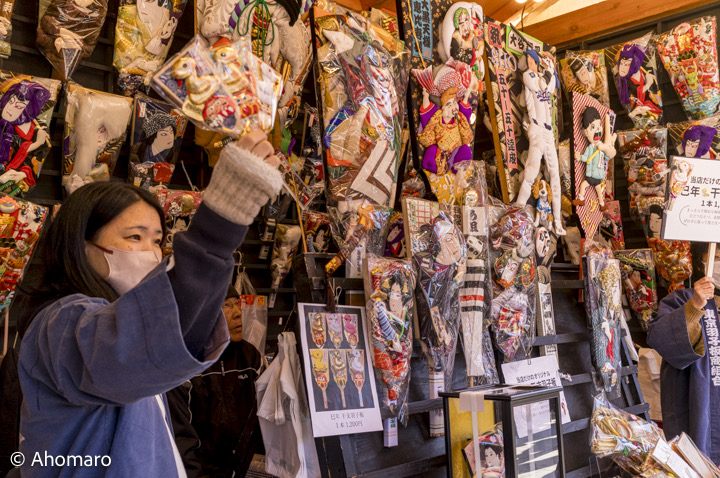
No-no Kannon Year’s Market Hagoita Market
The 18th of every month is the anniversary of Kannon Bodhisattva. Among them, December 18 is called “Kannon no Noumen Kannon” and is especially visited by many worshippers. In the Edo period (1603-1867), in anticipation of the crowds on December 17 and 18, stalls selling New Year’s goods and lucky charms gathered on the temple grounds, and the event came to be known as “Toshi-no-ichi. Although New Year’s fairs were held at other temples and shrines, Senso-ji Temple’s market was the largest of its kind in Edo, with stalls lined up all the way from Asakusabashi to Ueno.